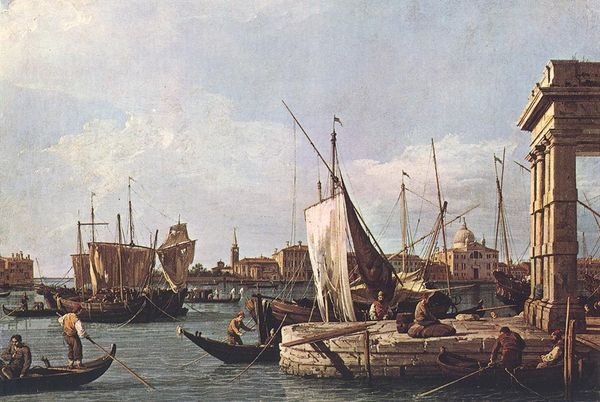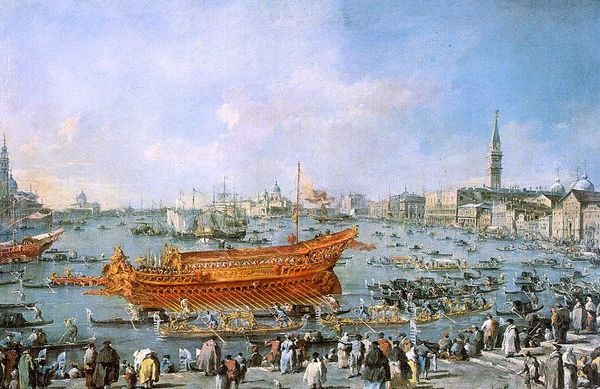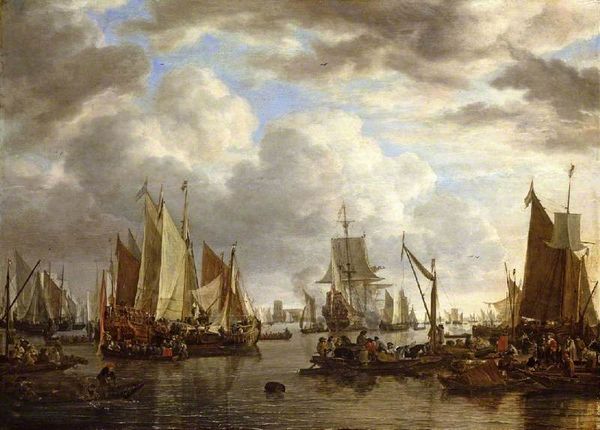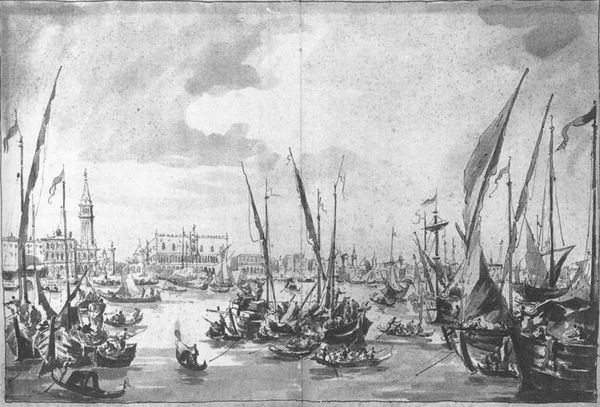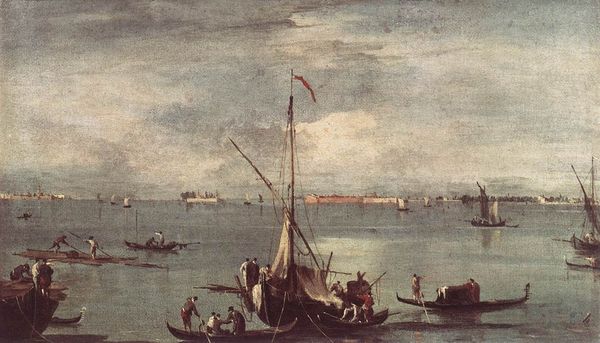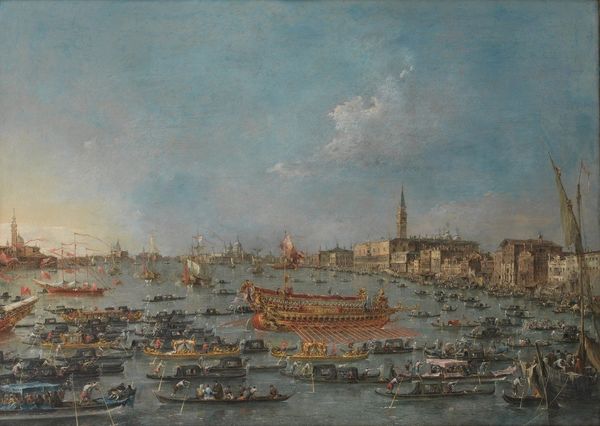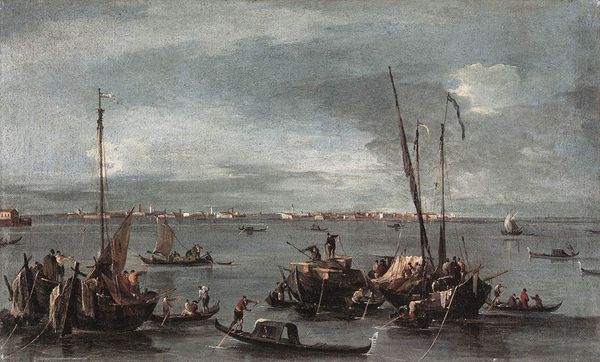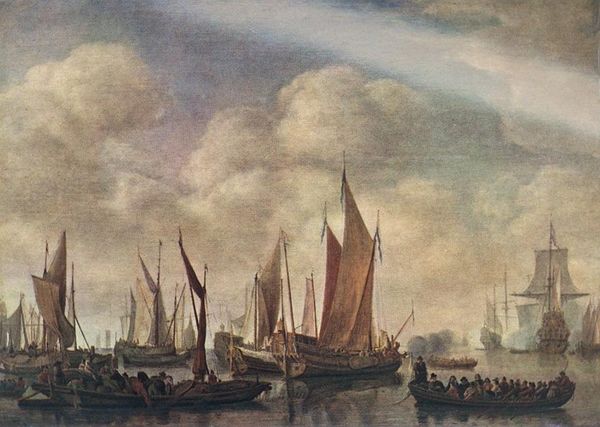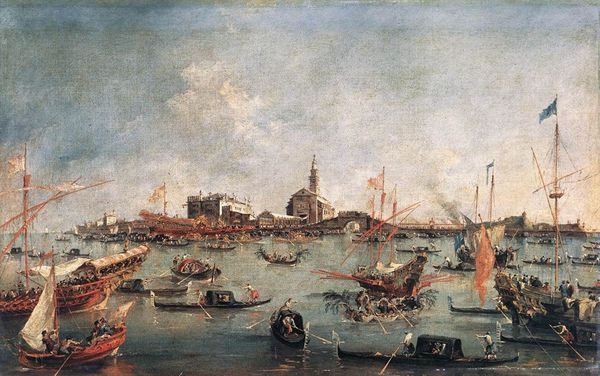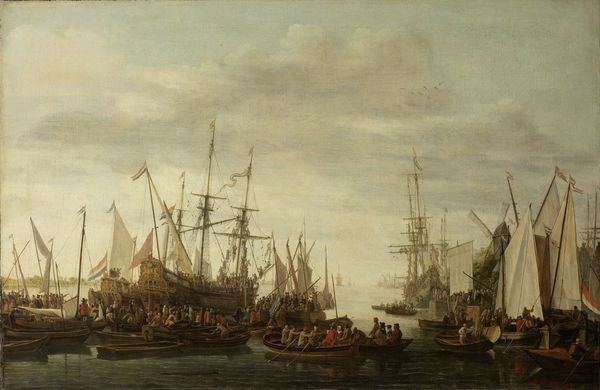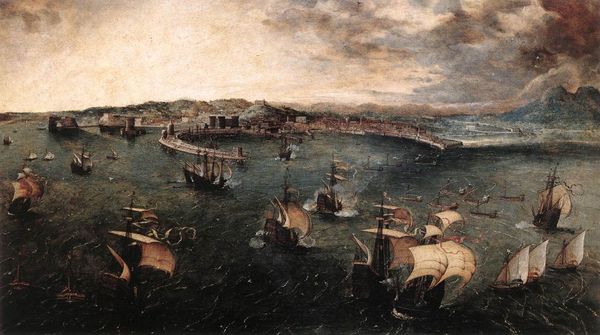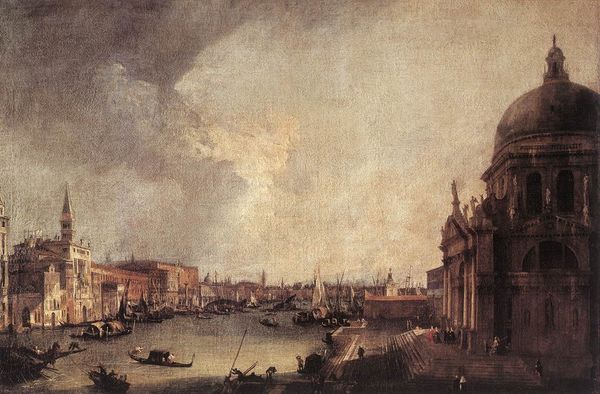
Dimensions: 66 x 100 cm
Copyright: Public domain
Curator: Let's delve into this vibrant oil painting, "The Doge on the Bucintoro near the Riva di Sant'Elena" painted around 1770 by Francesco Guardi and now housed in the Louvre. What strikes you most about it? Editor: Immediately? The light. It's diffused, almost shimmering off the water, lending an air of unreality to the scene. Like a half-remembered dream of Venice. Curator: Indeed, Guardi's handling of light and atmosphere is key here. Consider how the buildings, especially those clustered around the Piazza San Marco, appear almost weightless, fading into the distance. This technique, coupled with his distinctive broken brushstrokes, moves beyond mere topography, creating a dynamic, breathing cityscape. I'm interested in what sort of social meaning the 'genre painting' tries to convey. Editor: It feels romanticized, doesn't it? You can almost feel the festive spirit, the hum of activity. Is it just me or there's something a bit melancholic beneath the surface, too? Perhaps the fleeting nature of power and pageantry? Curator: Possibly, or a sharp eye to the industry in that urban center. Venetian painting often served specific socio-political purposes, particularly in portraying state events. The Bucintoro itself—the Doge's ceremonial barge, lavishly decorated—symbolized Venetian power and prosperity. Guardi's family had worked for generations crafting these ornate spectacles, providing his social and aesthetic understanding. It's as much about celebrating maritime strength as capturing daily life. Editor: Right, that ostentatious barge floating with such gravity...it feels overloaded. Are we supposed to revel in Venetian glory, or ponder its eventual decline? Is this spectacle of wealth distracting people? Also the blurred faces and lack of expression adds a mystical vibe! Curator: That tension, that ambiguity, is what makes Guardi so compelling! His loose brushwork, seemingly spontaneous, actually masks a deep engagement with the materials and processes available at the time. The materiality informs its political meaning as much as the subject matter. Editor: Absolutely. Well, exploring the intersection of materials, politics, and aesthetics in Guardi's Venice makes for a captivating audio tour, no? Curator: Indeed, and perhaps inspires a different kind of reflection from our audience about spectacle in their daily lives.
Comments
No comments
Be the first to comment and join the conversation on the ultimate creative platform.
